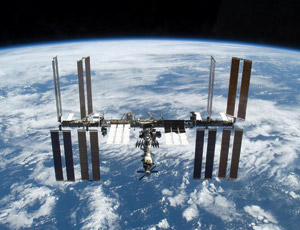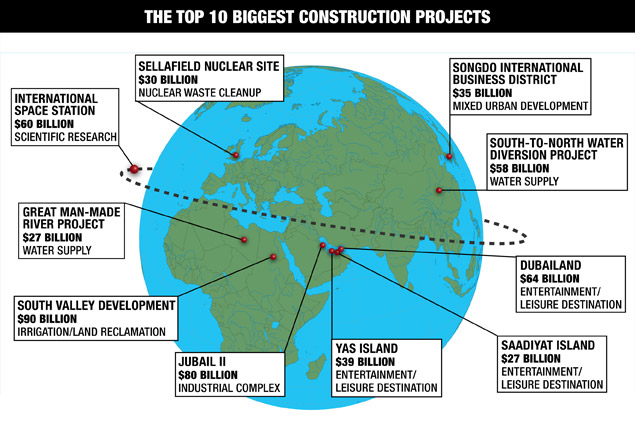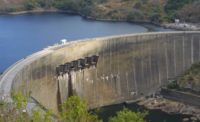Located in low earth orbit at an altitude of 360 kilometers, the space station has been circling Earth every 92 minutes since the launch of Zarya, its initial power and propulsion module, in November 1998.

Created by a partnership of five space agencies representing 15 nations, the station has a main truss 310 ft long and photovoltaic arrays equivalent in size to two football fields. The station ultimately will include four laboratories and a dozen other habitation, service and cargo modules. The newest component of the station is the observatory module, known as the Cupola, which was launched and attached in February.
The station has been staffed continuously by teams of two or more astronauts since November 2000, with a crew of six on board at present. By now all of the solar arrays and three laboratory modules——Destiny (U.S.), Columbus (Europe), and Kibo (Japan)——have been installed. Experiments conducted so far include studies on the physiological effects of microgravity and solar cell performance in space. Ongoing research projects focus on the long-term effects of space travel on human biology.
NASA has gradually thawed regarding commercialization of space activities. One turning point was the 2005 NASA Authorization Act, which designated the U.S. segment of the ISS as a national laboratory, and directed NASA to develop a plan to “increase the utilization of the ISS by other federal agencies and the private sector.” To date, NASA has reached agreements with five private companies interested in conducting research aboard the space station.
Three components of the station await delivery. The Permanent Multi-Purpose Module will launch aboard Space Shuttle Discovery, scheduled for September. The Alpha Magnetic Spectrometer, a particle physics experiment, is scheduled for launch in February, 2011. The final component, Nauka, the Russian lab module, is scheduled for launch in 2012.
The station’s overall cost encompasses research and development, construction and operation of the various modules, and laboratory research work performed there. The U.S. share of the costs through assembly completion in 2011 is estimated to be $31 billion.
Construction fell behind schedule due to an interruption of NASA’s shuttle flights following the February 2003 Columbia crash. The final space shuttle mission is scheduled for 2011.
Other spacecraft that supply the station include the Automated Transfer Vehicle (ATV) from the European Space Agency, the Progress vehicle from Russia and the H-II Transfer Vehicle (HTV) from Japan. The ATV and HTV vehicles are scheduled to pay annual visits to the space station starting this year. While Russia’s smaller Soyuz spacecraft can ferry crews, it lacks significant cargo-carrying capacity.
NASA and its partners plan to continue operating the station past its originally planned retirement date of 2016, likely to 2020 or beyond. (ENR 4/22/02 p. 12)
Location: Space
Estimated Cost: $60 billion
Construction Period: 1993-2012
Developers: A joint project of the U.S National Aeronautics and Space Administration, Russian Federal Space Agency, Japan Aerospace Exploration Agency, Canadian Space Agency, and the European Space Agency.
Click below on each box to view more about the project





Post a comment to this article
Report Abusive Comment